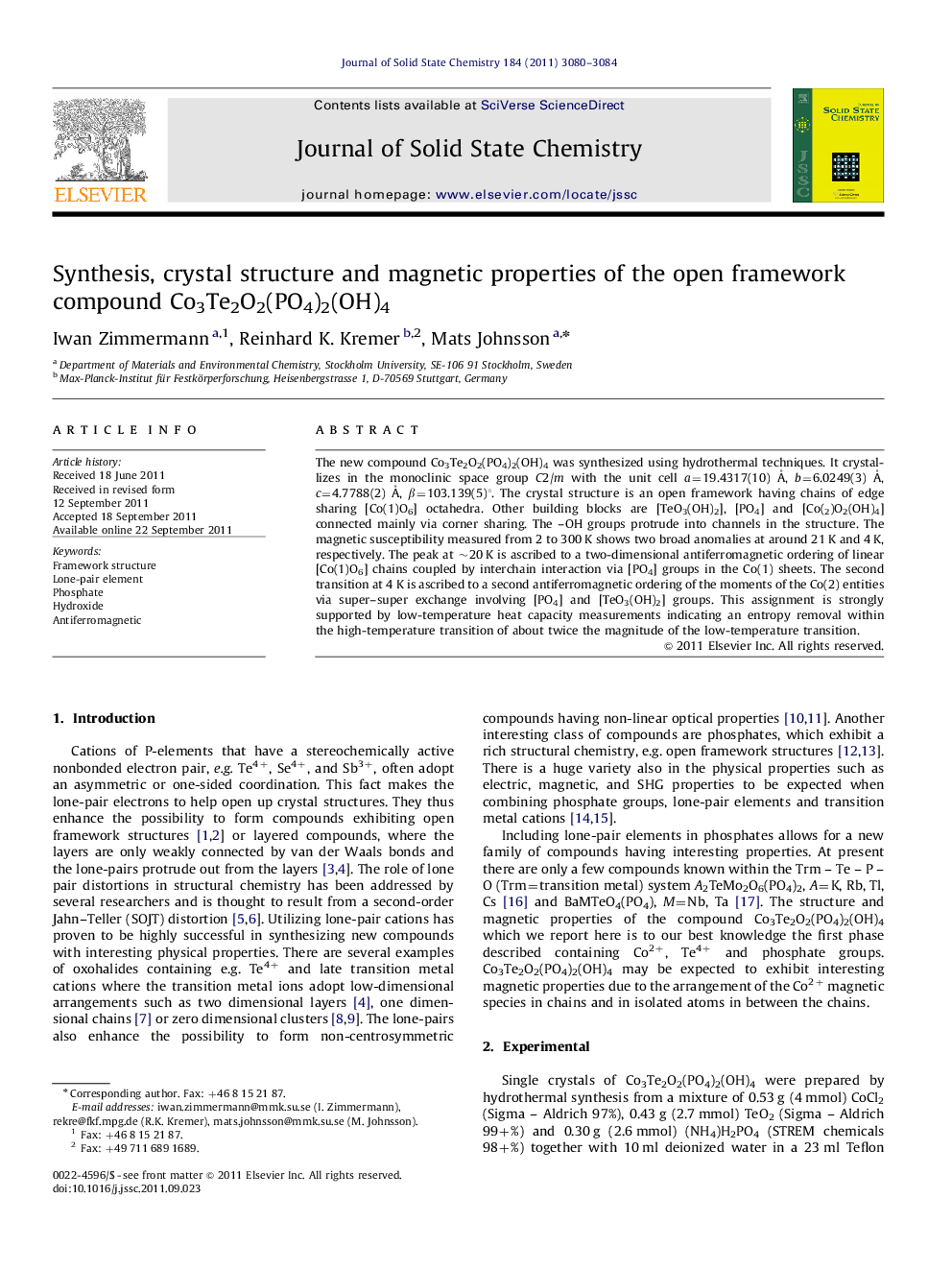| Article ID | Journal | Published Year | Pages | File Type |
|---|---|---|---|---|
| 1332085 | Journal of Solid State Chemistry | 2011 | 5 Pages |
The new compound Co3Te2O2(PO4)2(OH)4 was synthesized using hydrothermal techniques. It crystallizes in the monoclinic space group C2/m with the unit cell a=19.4317(10) Å, b=6.0249(3) Å, c=4.7788(2) Å, β=103.139(5)°. The crystal structure is an open framework having chains of edge sharing [Co(1)O6] octahedra. Other building blocks are [TeO3(OH)2], [PO4] and [Co(2)O2(OH)4] connected mainly via corner sharing. The –OH groups protrude into channels in the structure. The magnetic susceptibility measured from 2 to 300 K shows two broad anomalies at around 21 K and 4 K, respectively. The peak at ∼20 K is ascribed to a two-dimensional antiferromagnetic ordering of linear [Co(1)O6] chains coupled by interchain interaction via [PO4] groups in the Co(1) sheets. The second transition at 4 K is ascribed to a second antiferromagnetic ordering of the moments of the Co(2) entities via super–super exchange involving [PO4] and [TeO3(OH)2] groups. This assignment is strongly supported by low-temperature heat capacity measurements indicating an entropy removal within the high-temperature transition of about twice the magnitude of the low-temperature transition.
Graphical AbstractThe new compound Co3Te2O2(PO4)2(OH)4 has been synthesized using hydrothermal techniques. It crystallizes in the monoclinic space group C2/m. Building blocks are [Co(1)O6], [TeO3(OH)2], [PO4] and [Co(2)O2(OH)4]. The magnetic susceptibility shows two antiferromagnetic transitions at 21 K and 4 K, respectively.Figure optionsDownload full-size imageDownload as PowerPoint slideHighlights► The first cobalt tellurium phosphate has been synthesized and structurally determined. ► There are two antiferromagnetic orderings identified, one at 21 K and one at 4 K respectively. ► A spin flop transition is observed at low temperatures.
